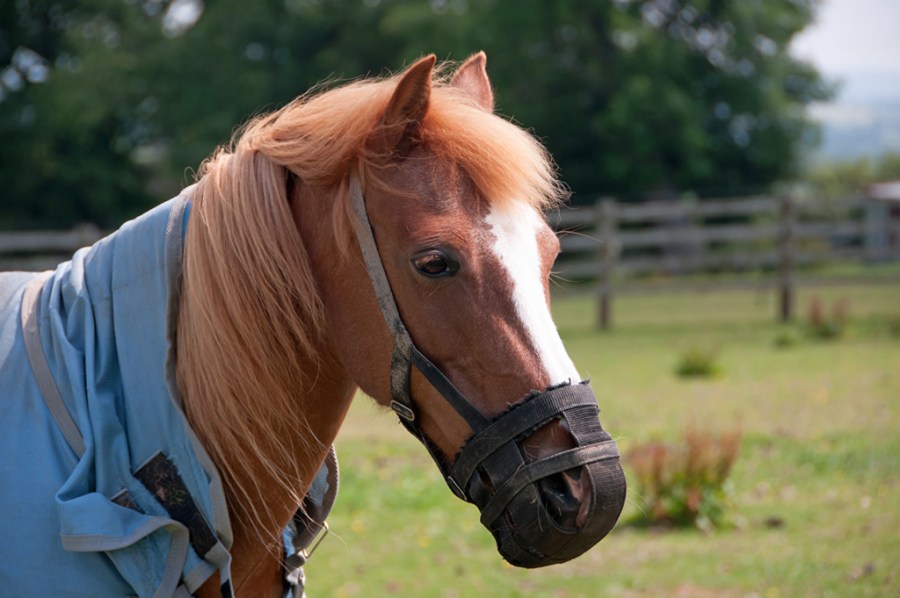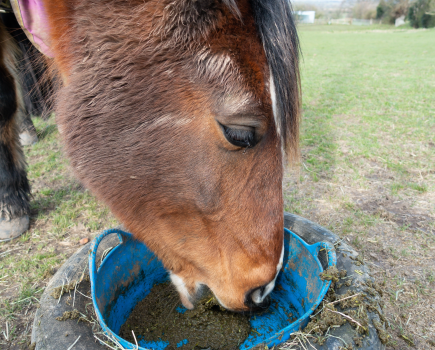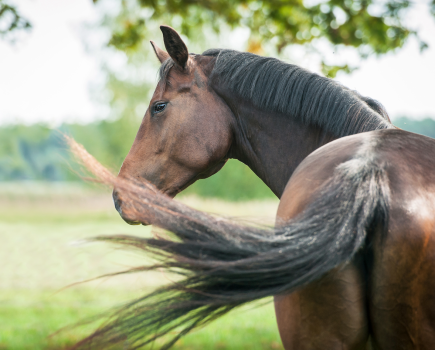In partnership with Allen & Page
If your horse or pony is struggling to lose weight, but you don’t have the option to restrict their grazing by turning them out on a bark paddock or limit their grass intake with a smaller paddock, a grazing muzzle can be the next best option. But are they cruel? Allen & Page nutritionist Jo Palmer answers this key question.
Provided that a grazing muzzle is fitted correctly and that the horse is able to eat and drink, using one isn’t cruel.
Grazing muzzles can be an essential tool in preventing excessive grass intake and controlling obesity in many horses and ponies. Uncontrolled grass intake can lead to dangerous levels of obesity, which often results in horses and ponies suffering from debilitating and extremely painful bouts of laminitis that can prove fatal.
As long as a grazing muzzle is introduced gradually, most horses adapt well to wearing one. Unlike other methods used to reduce grass intake, such as stabling or turning out in a grass-free pen, wearing a grazing muzzle still allows horses and ponies to fulfil their natural grazing behaviours and enjoy the freedom of the field, rather than being confined for long periods, which can lead to reduced mobility and boredom.
Things to bear in mind…
- Care should be taken to check the horse for signs of rubbing and ensure that there’s no danger of them getting the muzzle or straps caught on anything in the field, such as fencing, troughs or trees.
- There are many different types of grazing muzzle, so if one doesn’t suit a particular horse, there are always alternatives to try.
- A grazing muzzle shouldn’t be left on for 24 hours a day. Instead, a maximum of 12 hours is recommended alongside other methods of restricted grass intake, such as strip grazing, or turning out on poorer pasture when unmuzzled.
Meet the expert: Jo Palmer has a BSc (Hors) in agriculture with animal science and is a member of the Allen & Page nutrition team, helping to guide owners on feeds and feeding.
Check out our subscription offer







